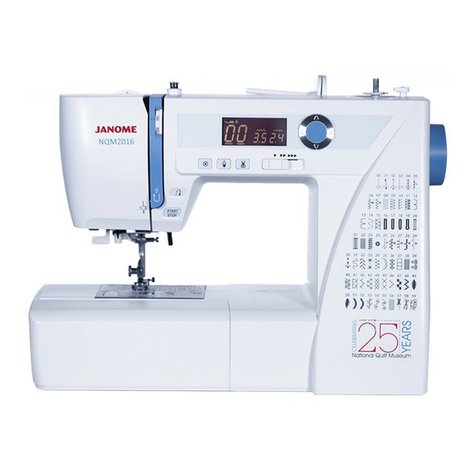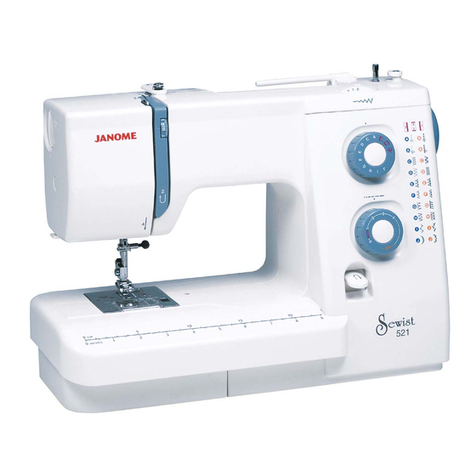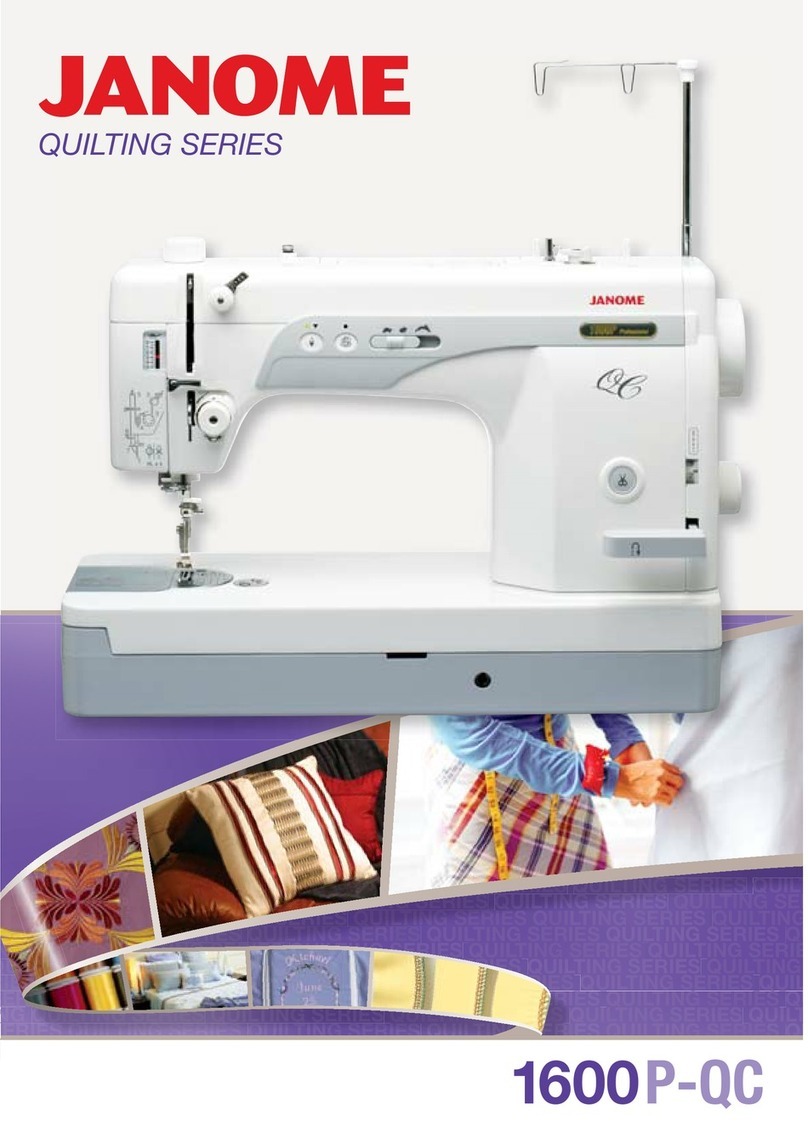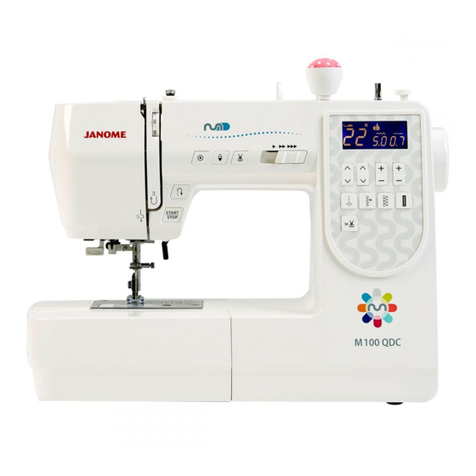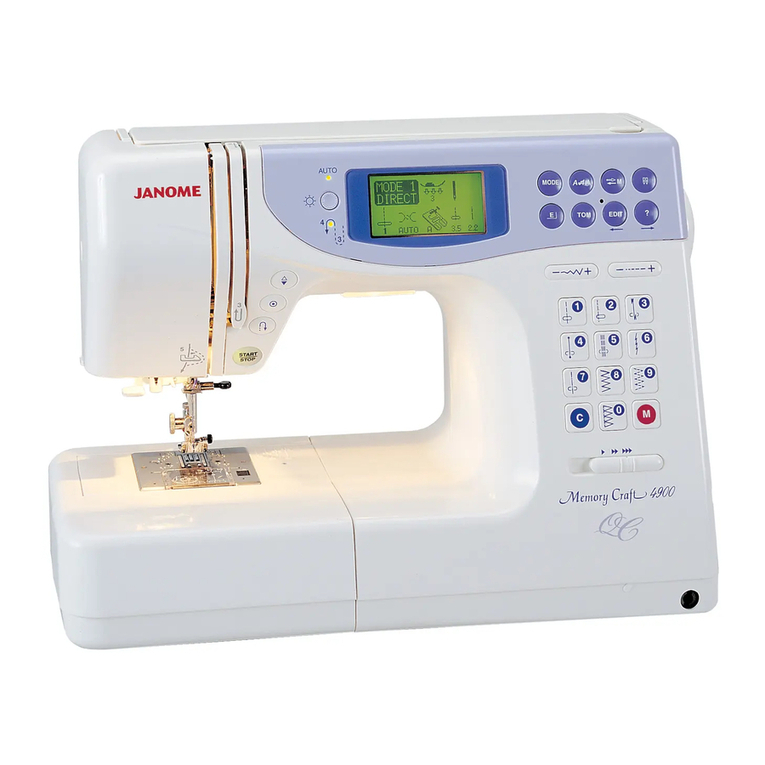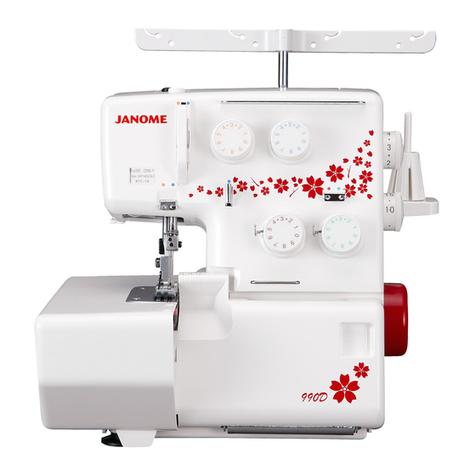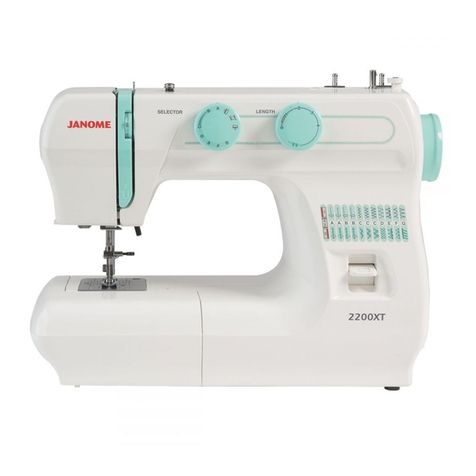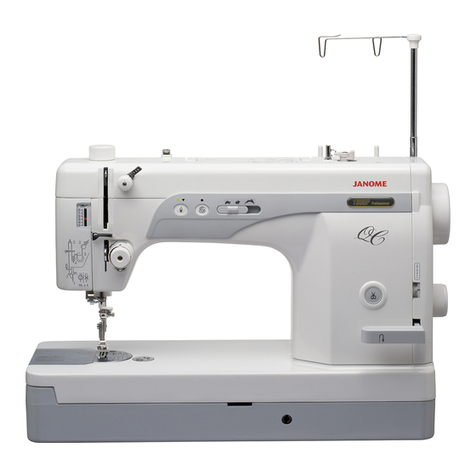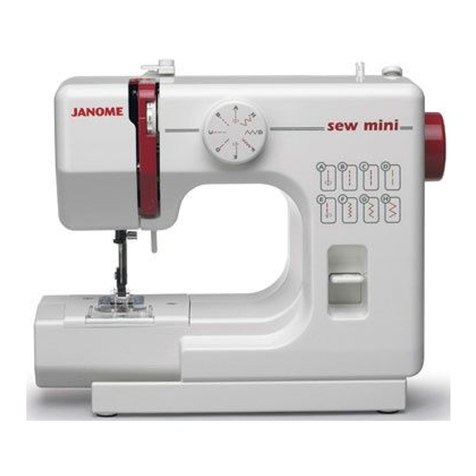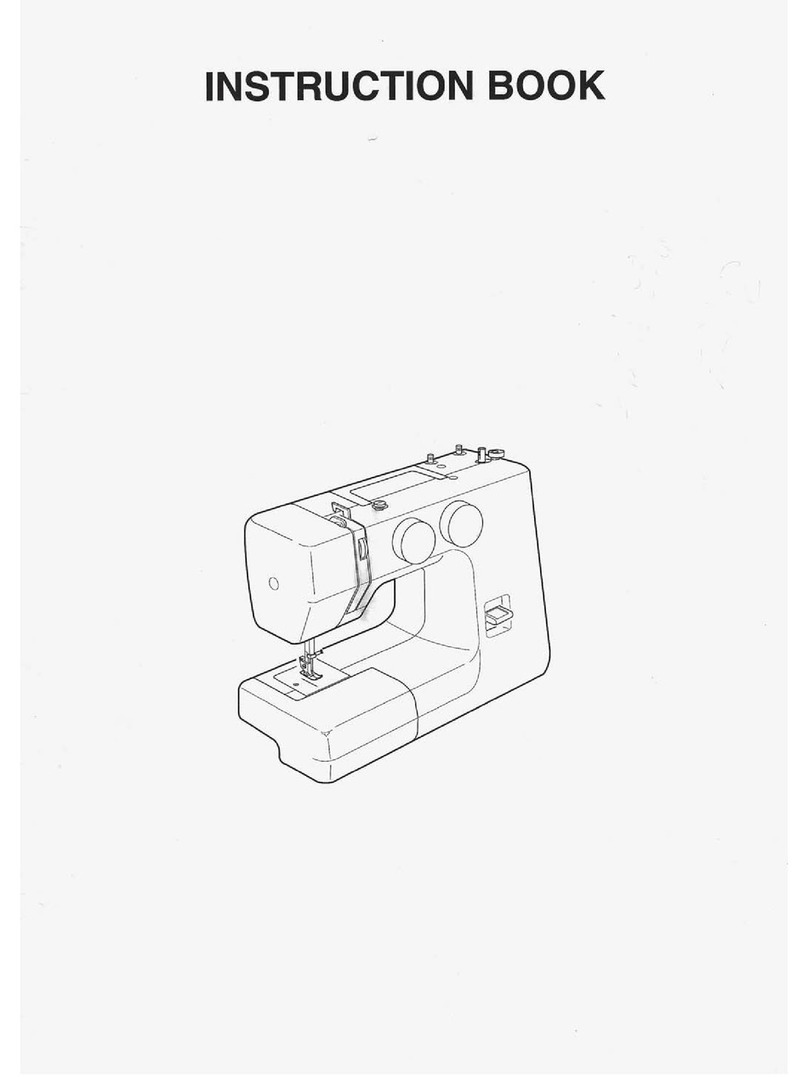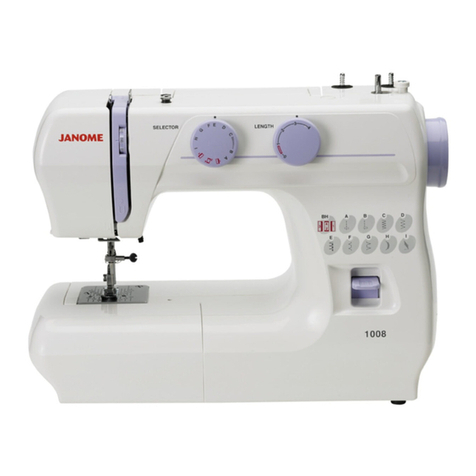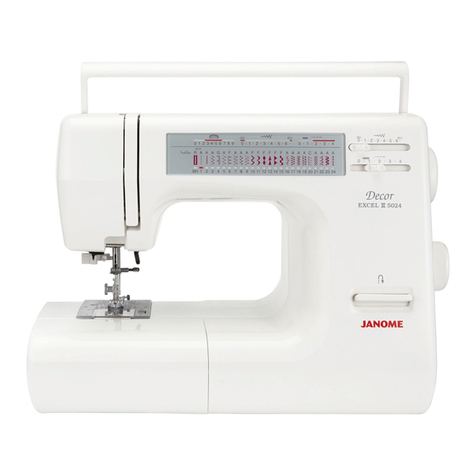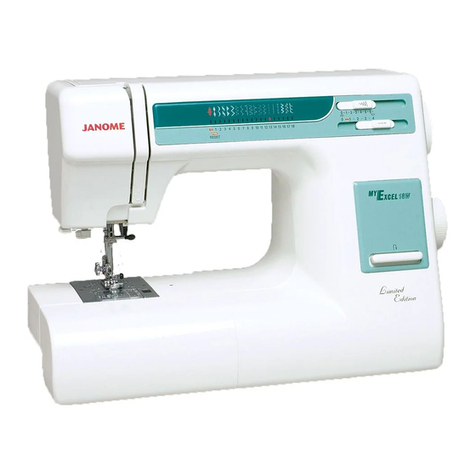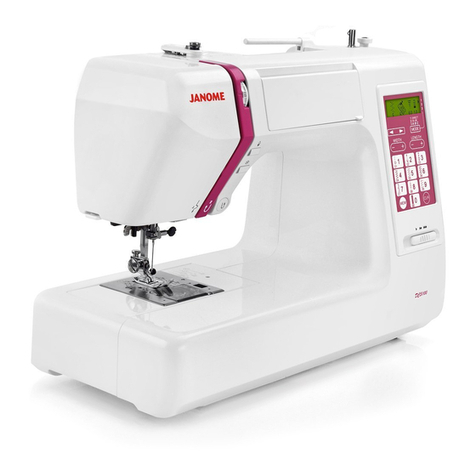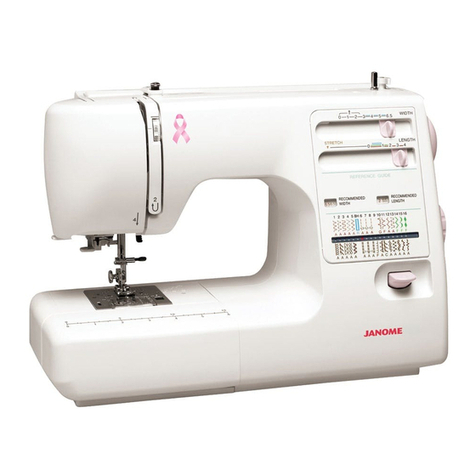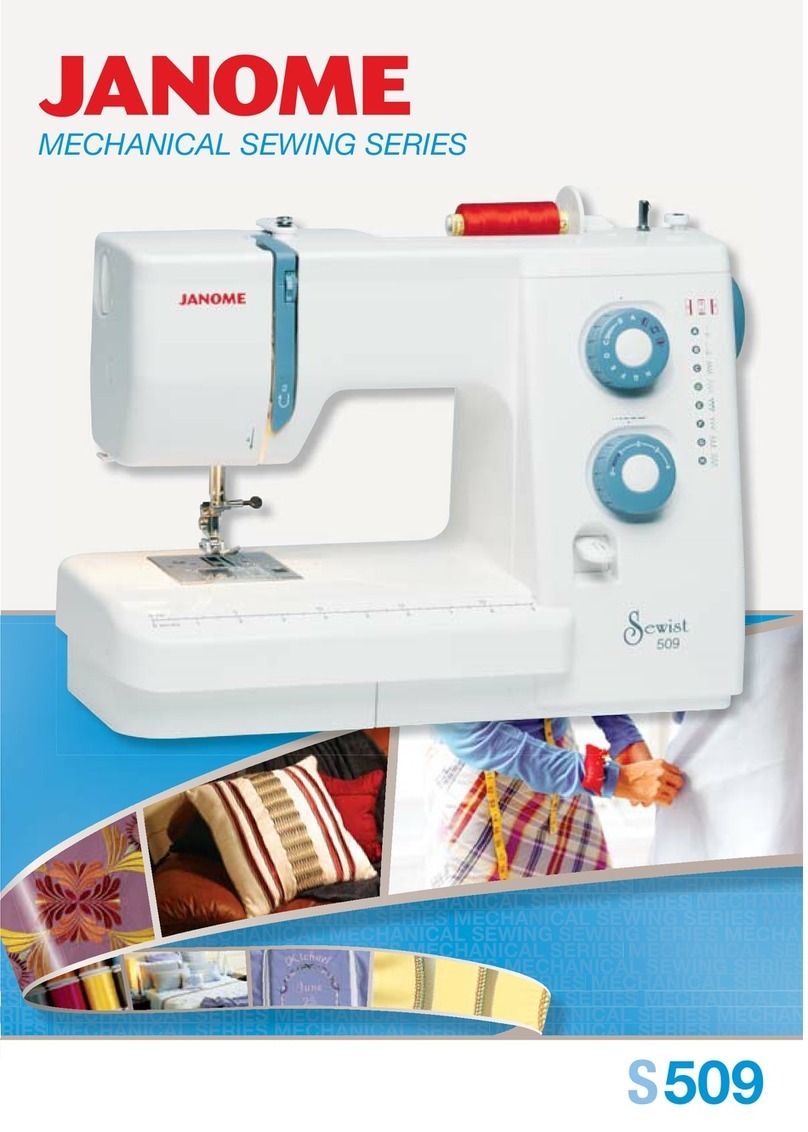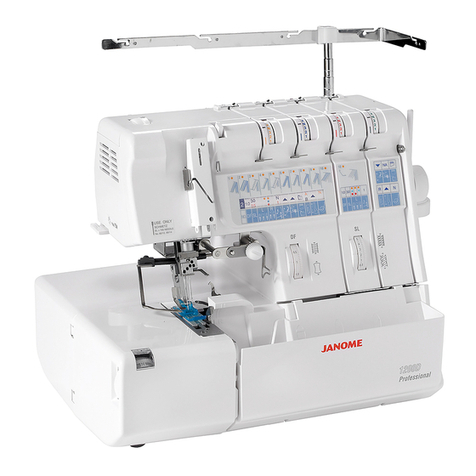CONTENTS
WHAT TO DO WHEN ............................................................................................ 1-3
SERVICE ACCESS
FACE COVER ...................................................................................... 4
TOP COVER ......................................................................................... 4
BASE PLATE ........................................................................................ 5
BED COVER ......................................................................................... 5
BELT COVER ....................................................................................... 6
FREE ARM COVER ............................................................................. 6
FRONT COVER.................................................................................... 7
REAR PANEL ....................................................................................... 8
MECHANICAL ADJUSTMENT
TOP TENSION ..................................................................................... 9
PRESSER BAR HEIGHT AND ALIGNMENT ....................................... 10
NEEDLE SWING .................................................................................. 11
STRAIGHT STITCHING ....................................................................... 12
DISTRIBUTION OF NEEDLE SWING .................................................. 13
STRETCH STITCH BALANCE ............................................................. 14, 15
FEED DOG HEIGHT ............................................................................ 16
CLEARANCE BETWEEN NEEDLE AND HOOK ................................. 17
NEEDLE TO HOOK TIMING ................................................................ 18
NEEDLE BAR HEIGHT ........................................................................ 19
BACKLASH (LOWER SHAFT GEAR) .................................................. 20
BUTTONHOLE STITCH BALANCE ..................................................... 21
NEEDLE POSITION ............................................................................. 22
ZERO FEEDING ................................................................................... 23
REPLACEMENT AND ADJUSTMENT OF THE NEEDLE
THREADER PLATE .............................................................................. 24
BUTTONHOLE FUNCTION (1) ............................................................ 25
BUTTONHOLE FUNCTION (2) ............................................................ 26
MOTOR BELT TENSION ..................................................................... 27
REPLACING TRANSFOMER ................................................................................ 28
WIRING OF TERMINAL BLOCK .......................................................................... 29
OILING .............................................................................................................. 30
PARTS LIST .......................................................................................................... 31~53
